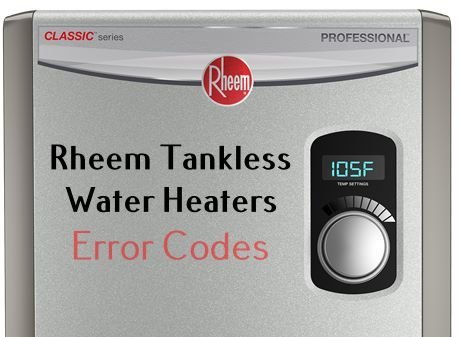
Water heaters are the unsung heroes of our homes, quietly ensuring that we have hot water whenever we need it. But just like any hero, they sometimes need a little help. The “OE” error code on Rheem water heaters is a way of saying, “Something isn’t quite right here.” In most cases, this code is specifically related to an improper or blocked water flow within the system. While it might sound a bit technical, think of it like a roadblock on a highway. If cars (or in this case, water) can’t move freely, there’s bound to be some issues. Don’t worry, though; we’ll go through the causes and solutions one step at a time.
Understanding the OE Error Code: The Basics
When your Rheem water heater flashes the OE error code, it’s pointing to an issue with the water flow within the system. Imagine your water heater as a well-oiled machine. Water comes in, gets heated, and then goes out to your taps. For everything to work smoothly, there needs to be a proper flow. If something’s blocking this flow or causing it to be uneven, your water heater won’t function as it should. It’s a bit like having a crimped garden hose; the water can’t get through as easily, and you might see reduced flow or pressure.
This particular error code can be a result of several factors. It could be due to a blocked or closed water inlet valve. This valve is like a gatekeeper, controlling the water entering your heater. If it’s closed or partially blocked, not enough water gets in, causing the OE error. Alternatively, it could be an issue with a faulty flow sensor that’s not detecting the water flow correctly. Think of this sensor as a referee in a game—if it doesn’t see the flow properly, it might call a false foul, triggering the error.
To get your heater back on track, the first step is to check these common culprits. Make sure the water inlet valve is fully open and inspect for any obvious clogs. If everything seems clear there, resetting the water heater might just do the trick. It’s akin to rebooting your computer when it freezes—sometimes a fresh start is all it needs. But if the problem persists, a deeper dive into the system is required.
Common Causes of the OE Error Code
So, what really causes this OE error to pop up? Let’s break it down. The most straightforward cause is a physical blockage in the system. Over time, mineral deposits can build up in the pipes, similar to how cholesterol can clog arteries. These deposits restrict water flow, leading to the error code. Regular maintenance can often prevent this, but once it happens, professional cleaning might be necessary.
Another culprit could be the aforementioned flow sensor malfunctioning. This can occur if the sensor gets dirty or fails over time. Remember our referee analogy? If the referee’s glasses are smudged, they can’t see the game clearly, leading to incorrect calls. Similarly, a faulty sensor might fail to read the proper water flow, resulting in the OE error code.
Lastly, the issue might be electrical. Water heaters are electronic devices, and like all electronics, they can face issues like short circuits or loose connections. Such problems could lead to the system misreading inputs and outputs, thus flashing the error. Ensuring that the device is properly grounded and that all connections are tight can help mitigate these risks.
Fixing the OE Error Code: Step-by-Step Solutions
You don’t have to be a professional plumber to tackle the OE error code—sometimes, a few simple steps can do the trick. First, ensure that the water inlet valve is open and free from debris. A quick inspection might reveal blockages that you can easily clear. If any deposits are blocking the flow, gently clean them out, being careful not to damage the valve.
Next, reset your water heater. Unplug it, wait a few moments, and then plug it back in. This simple action can sometimes resolve the issue, much like restarting a stubborn computer. If the reset doesn’t work, it’s time to consider checking the flow sensor. This might involve a bit more technical work, so refer to your manual for detailed guidance or consider calling in a professional if you’re unsure.
Finally, if none of these steps work, it could be time to examine the electrical components. Make sure everything is properly connected and that there are no visible issues with the wiring. Safety is key, so if you’re not comfortable dealing with electrical components, don’t hesitate to call a trusted technician.
Prevention and Maintenance Tips
Prevention is always better than cure, especially when it comes to your trusty water heater. Regular maintenance can save you a lot of hassle down the line. Consider scheduling routine check-ups with a professional to ensure everything is running smoothly. This is akin to getting regular oil changes for your car—keeping things in top shape to avoid breakdowns.
Regularly inspect and clean the water inlet valve. Over time, mineral deposits can build up and cause blockages, leading to errors like the OE code. By addressing these issues before they escalate, you can keep your water heater in great condition for years to come.
Lastly, be mindful of the signs your water heater gives you. Any unusual noise or behavior is your device’s way of calling for help. Addressing small issues before they become big problems can save you time and money in the long run. If in doubt, don’t hesitate to consult with a professional who can provide guidance and peace of mind.
And there you have it! The next time your Rheem water heater flashes that pesky OE error code, you’ll know exactly what to do. Remember, your water heater is a vital part of your home, so treat it with care, and it’ll continue to serve you faithfully.